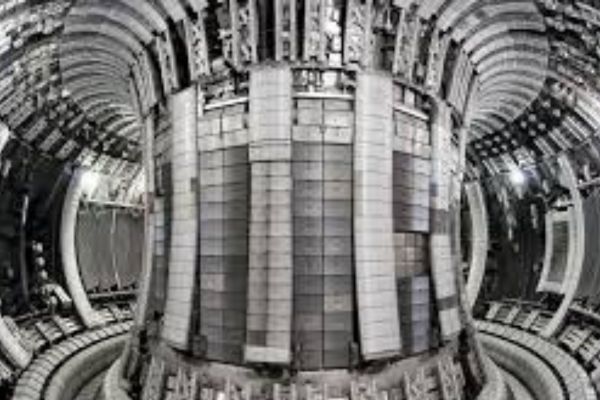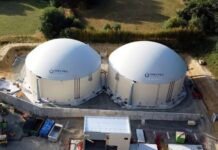The global nuclear materials market was valued at USD 36.83 billion in 2024 and is projected to reach approximately USD 97.68 billion by 2034, expanding at a compound annual growth rate (CAGR) of 10.24% from 2025 to 2034. This growth is driven by rising global demand for nuclear energy, as more governments aim to reduce carbon emissions. The increasing need for advanced nuclear fuels and reactor materials—particularly zirconium alloys and uranium—also supports market expansion. Additionally, growing investment in R&D for next-generation technologies like Small Modular Reactors (SMRs) is further boosting market momentum. Challenges such as nuclear waste management and the demand for advanced radiation-absorbing materials are contributing to innovation and market evolution.
Nuclear materials—such as uranium, thorium, plutonium, and various radioisotopes—are essential in energy production via nuclear fission. Beyond energy, these materials have critical roles in medicine, industry, and defense, such as in radiography, cancer treatment, and nuclear armaments. As a result, strict safety and regulatory measures are necessary to minimize risks associated with radiation, environmental hazards, and nuclear proliferation.
Market Highlights:
- North America led the market with a 36% revenue share in 2024.
- Europe followed with a 31% share.
- Asia-Pacific is expected to record the fastest growth during the forecast period.
- Special nuclear materials accounted for the largest share by type.
- Energy and power emerged as the leading end-use segment.
Segment Analysis
By Type
Special Nuclear Materials:
- Plutonium (Pu-239): Produced by irradiating uranium-238 in reactors, used in MOX fuels and nuclear weapons. Due to its proliferation risk and radioactivity, its use is heavily regulated.
- Uranium-233: Created by irradiating thorium-232. While considered a safer, more sustainable fuel alternative, it also poses proliferation concerns due to handling challenges.
- Uranium-235: The most widely used fissile material for both civil and military applications. Naturally occurring but often enriched, U-235 is highly regulated due to non-proliferation concerns.
Source Materials:
- Thorium: A promising alternative to uranium due to its abundance, safety profile, and lower waste output. However, commercial-scale thorium reactors are still in development.
- Natural Uranium: Composed primarily of U-238 and small amounts of U-235, used in reactors either directly or after enrichment.
- Depleted Uranium: Uranium with reduced U-235 content. Used in military armor-piercing applications and radiation shielding. Environmental concerns limit its broader use.
By Product Material
- Uranium: The cornerstone of global nuclear energy production, with significant roles in both civilian power generation and military applications.
- Thorium: Gaining interest as a safer and more sustainable nuclear fuel for advanced reactors, though commercial deployment remains limited.
By End User
- Medicine: Widely used in diagnostics and cancer therapy through isotopes like iodine-131 and cobalt-60.
- Agriculture: Applied in food irradiation, pest control, and crop breeding through isotopic techniques.
- Energy and Power: The dominant end-use sector. Nuclear energy is crucial for low-carbon electricity, especially via U-235 and Pu-239.
- Marine: Powers naval vessels, such as submarines and aircraft carriers, with compact nuclear reactors offering extended operational endurance.
- Aerospace: Radioisotope thermoelectric generators (RTGs) powered by plutonium-238 support deep-space missions.
- Industrial: Used in radiography, gauging, and material testing, particularly in sectors like oil & gas, construction, and manufacturing.
Regional Insights
North America
- 2024 Market Size: USD 13.26 billion
- 2034 Projection: USD 35.16 billion
- The U.S. leads globally in nuclear electricity production, with nuclear power accounting for about 20% of its electricity. Uranium is the primary fuel, and the region benefits from an established reactor fleet and regulatory framework.
Europe
- 2024 Market Size: USD 11.42 billion
- 2034 Projection: USD 30.28 billion
- France and Russia are major contributors, with France deriving ~70% of its electricity from nuclear power. While Germany is phasing out nuclear, it remains influential in nuclear research and waste management initiatives.
Asia-Pacific
- 2024 Market Size: USD 10.31 billion
- 2034 Projection: USD 27.35 billion
- Rapid nuclear expansion in China and India is fueling growth. China is constructing plutonium reprocessing plants and investing in breeder reactor technologies. Japan continues to support nuclear power development post-Fukushima, with enhanced safety measures and R&D efforts.
LAMEA (Latin America, Middle East, and Africa)
- 2024 Market Size: USD 1.84 billion
- 2034 Projection: USD 4.88 billion
- Key players include Brazil (with significant uranium reserves), South Africa (the continent’s sole nuclear plant), and the UAE (building multiple reactors under the Barakah project). The region is focused on energy diversification and long-term sustainability.
Get Deeper Insight@ https://www.cervicornconsulting.com/sample/2622








![SMART ENERGY WEEK [September] 2025 to Lead Global Renewable Energy Advancements SMART ENERGY WEEK](https://timestech.in/wp-content/uploads/2025/07/Untitled-design-2025-07-31T112230.406-218x150.jpg)









